Read the original article: macOS Big Sur: Quick Start Video Plus 50 Tips and Tricks
macOS Big Sur is finally here. Version 11 of Apple’s operating system for Mac features a completely overhauled look that’s designed to be both fresh and familiar, but it’s not just the design that’s new. Apple has also rethought and retooled many features of macOS to improve the user experience, so whether you’re running on Intel or Apple Silicon, there’s plenty that’s new to explore.
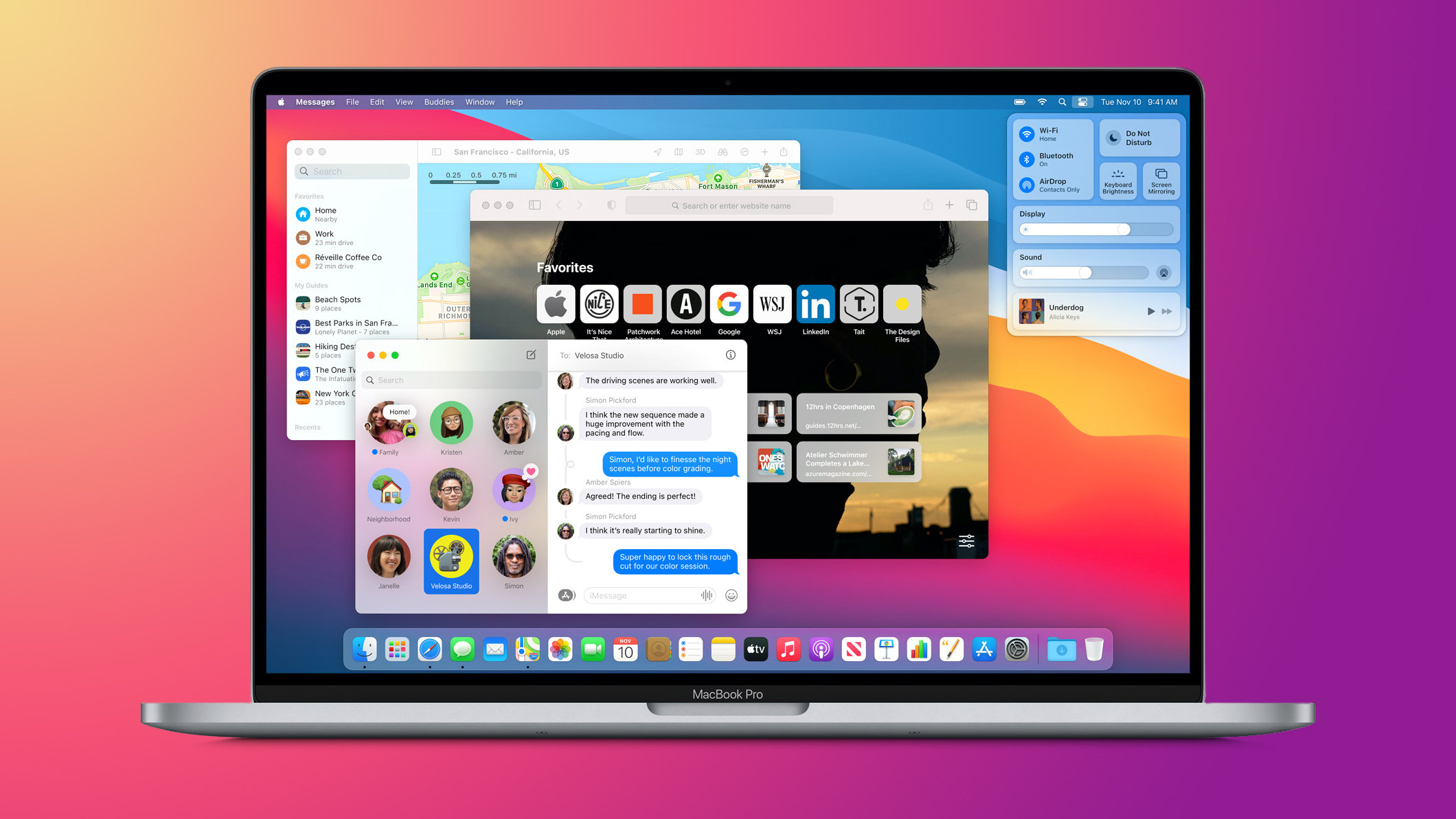
In this article, we’ve picked out some of our favorite additions and improvements in the public release of macOS Big Sur, including some smaller changes that you might not know about.
8 Quick Start Tips Video
This video gives you a quick overview on where to start with macOS Big Sur right after you get it installed:
If you’ve got more time to dig in, we’ve also collected this more comprehensive list of tips and tricks for the latest macOS release.
50 Tips and Tricks for macOS Big Sur
1. Setup Assistant Accessibility
When you first set up macOS, there’s a new step in the setup wizard that offers you an opportunity to configure various accessibility features before you log in.

In previous versions of macOS, the only accessibility option you could enable in the setup wizard was VoiceOver, so this should come as a welcome addition for users who find the accessibility features useful.
2. “Now Playing” Media Menu Bar Item
A new menu bar item for media that’s currently playing is now available. It’s similar to the widget that you can add to the Notification Center.
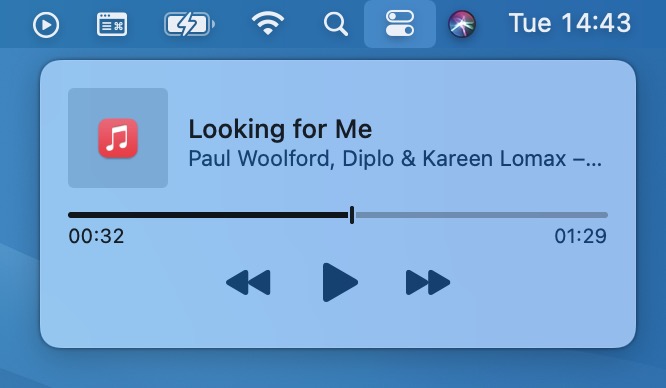
To enable the Now Playing menu bar item, go to System Preferences -> Dock & Menu Bar, click Now Playing in the side column, then check the box next to Show in Menu Bar.
3. Play Sound on Startup Option
You can now choose whether your Mac plays the traditional startup chime or not without having to mess with Terminal commands. Go to System Preferences -> Sound, and check the box next to Play sound on startup.
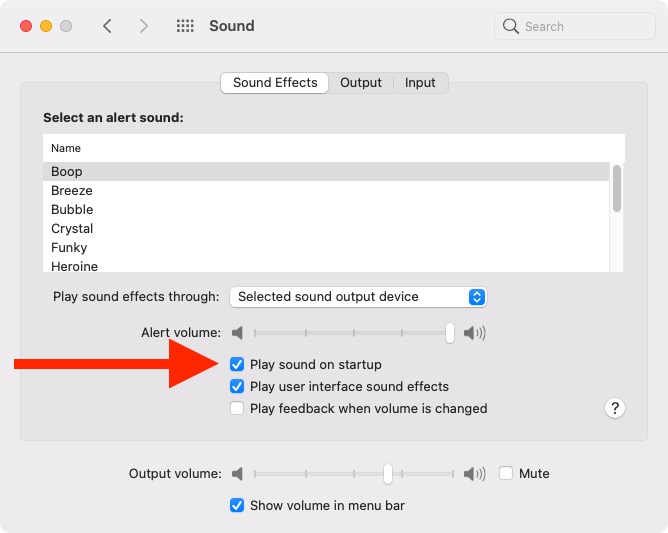
4. Tab Search Field
In Safari, you can search all your open tabs using a new Search Tabs input field in the upper right corner of the Tab Overview screen.
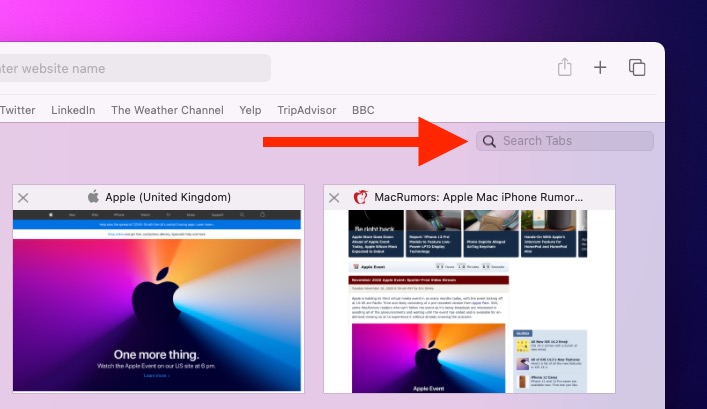
The functionality has actually been available in the Tab Overview screen in earlier versions of Safari, but the search field would only appear once you started typing, so many users probably didn’t realize that it was even a thing. This higher visibility should make more users aware of the feature.
5. Safari Start Page Customization
Safari in macOS 11 features a customizable Start Page that allows you to personalize various aspects of it.
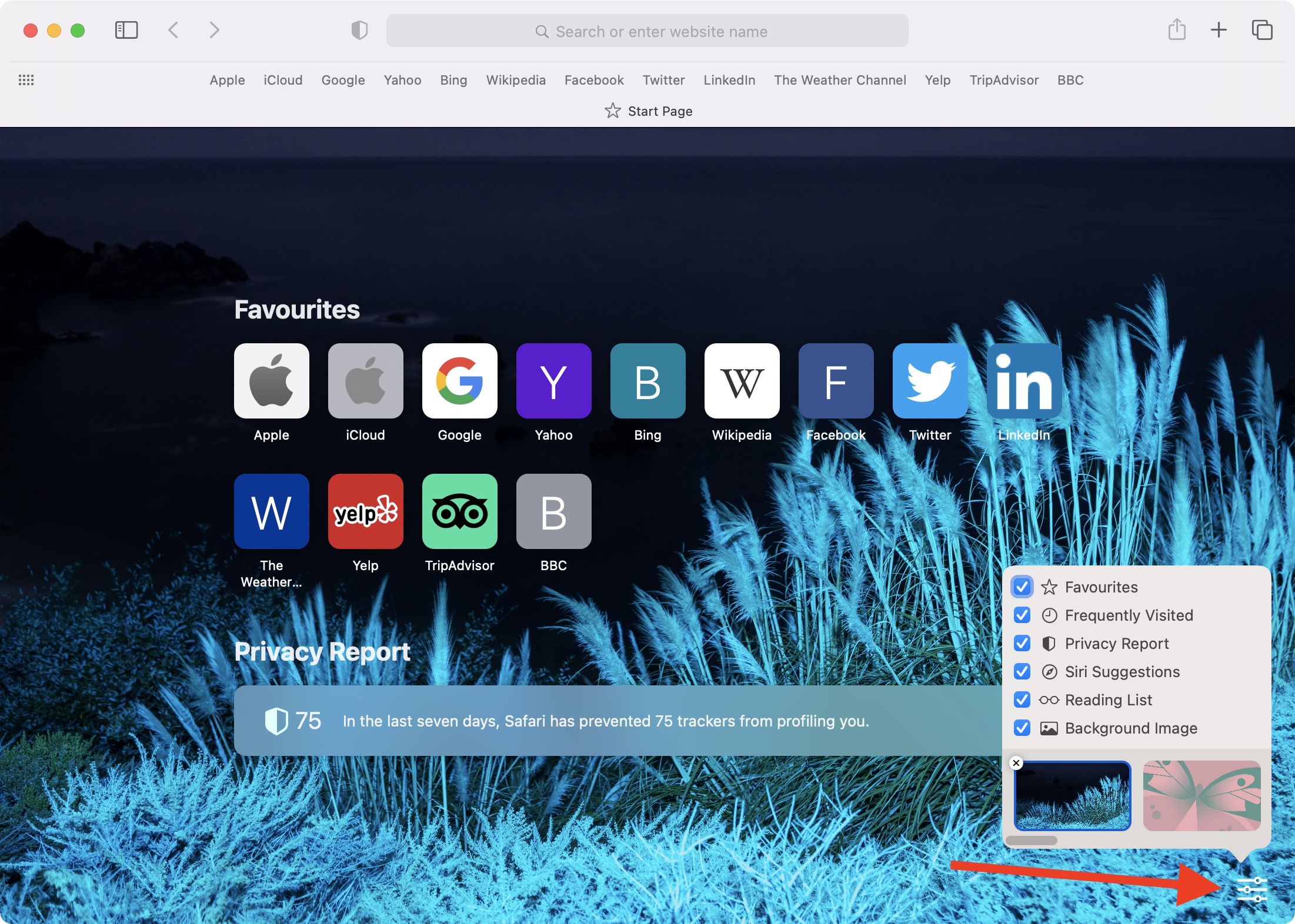
With the Start Page open, click the Settings icon in the bottom-right corner of the window, and you’ll see checkboxes to control the appearance of Favorites, Frequently Visited, Privacy Report, Siri Suggestions, Reading List, iCloud Tabs, and the Background Image. You can even select a wallpaper for the background, or choose your own image by using the big + button.
6. Control Wallpaper Tinting in Windows
In macOS Big Sur, windows are tinted based on the color of the desktop wallpaper by default, even if there’s something between the window and the wallpaper.
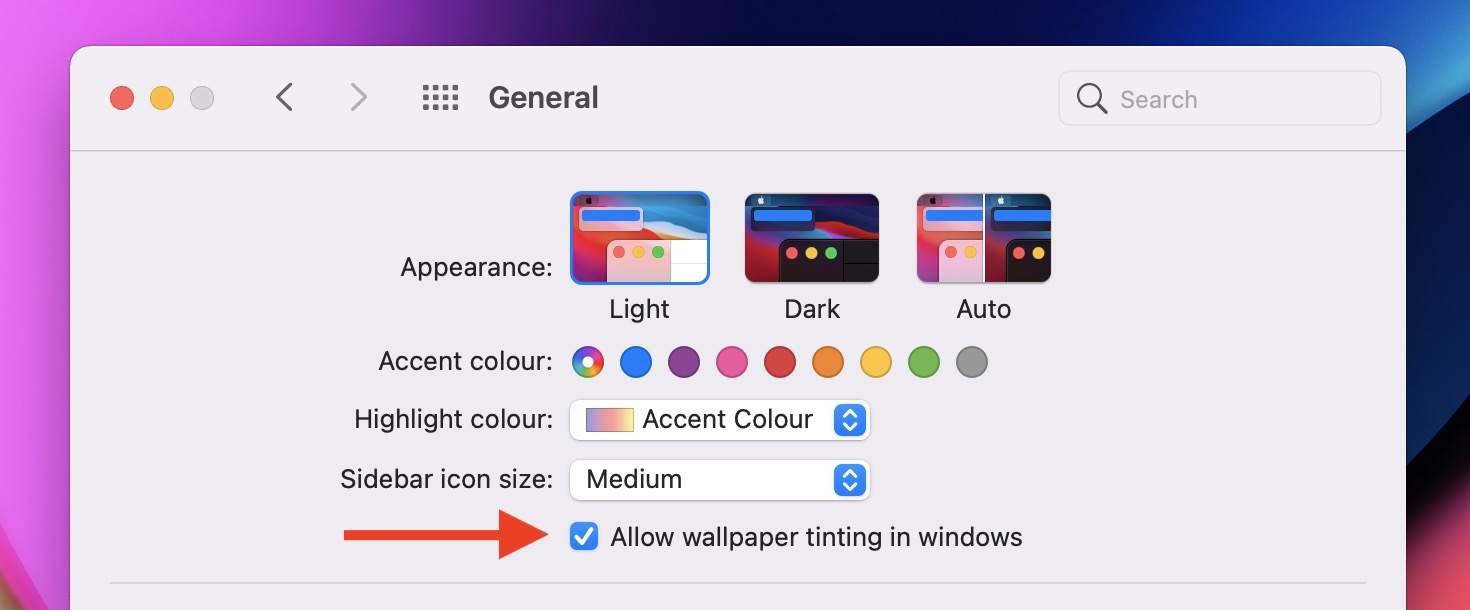
If that gets your goat, you can disable the colored tinting of windows by going to System Preferences -> General and unchecking the box next to Allow wallpaper tinting in windows.
7. Safari Tab Website Previews
Another neat addition in Safari is website previews for tabs. Instead of opening a tab to get a better idea of what it’s about, simply hover your cursor over the tab in question, and you’ll see a small preview of the website appear.

8. Override Battery Health Management
In macOS Catalina 10.15.5, Apple introduced battery health management, which limits the charge of your MacBook’s battery to extend its lifespan if your Mac is connected to a power source more often than not.
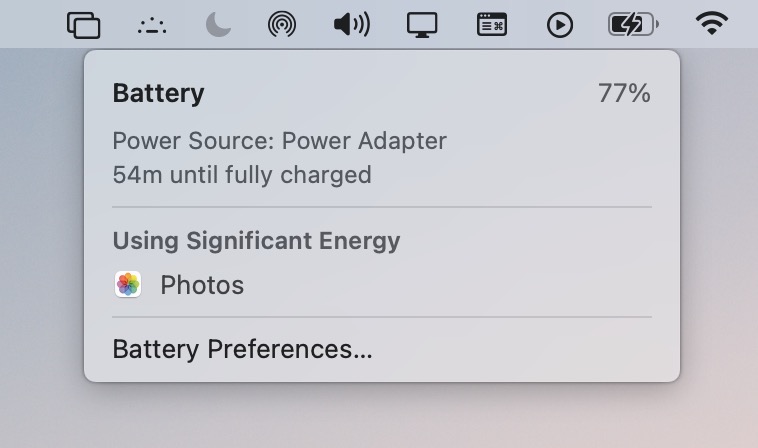
Previously it wasn’t clear if or when your Mac’s battery charge was being limited, but in Big Sur you can find this information right in the battery menu bar item, and even force a full charge when you need it using the Charge to Full Now option.
9. Safari Privacy Report
Safari now has an integrated Privacy Report that provides a list of trackers on a website and the number of trackers that were blocked, preventing websites from keeping tabs on your browsing habits across the web.
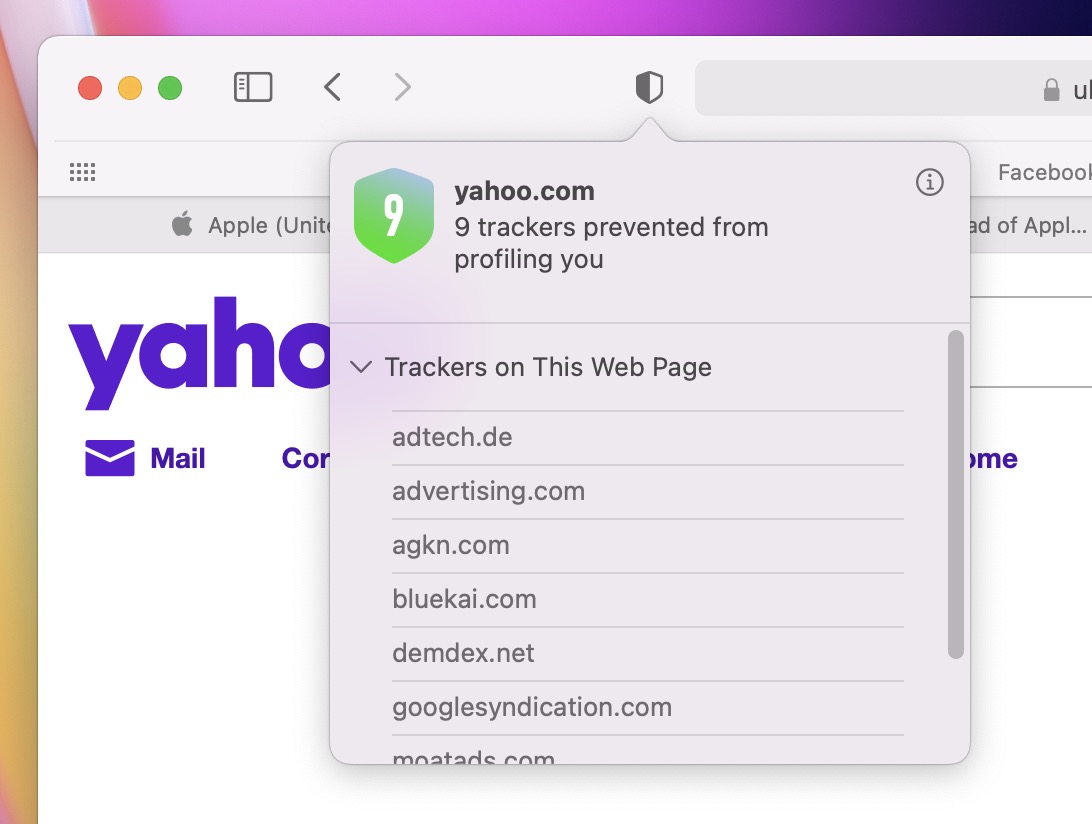
From the Privacy Report toolbar option, you can see how many trackers have been blocked in the last 30 days. You can also view a rundown on how many trackers have been blocked from profiling you on the Start Page.
10. Cycling Directions in Apple Maps
In Maps, routes with cycling directions can be planned on your Mac and sent to your iPhone or iPad, with the directions taking into account elevation, busy roads, stairs, and more, plus there are options for planning routes that incorporate electric vehicle charging stations.
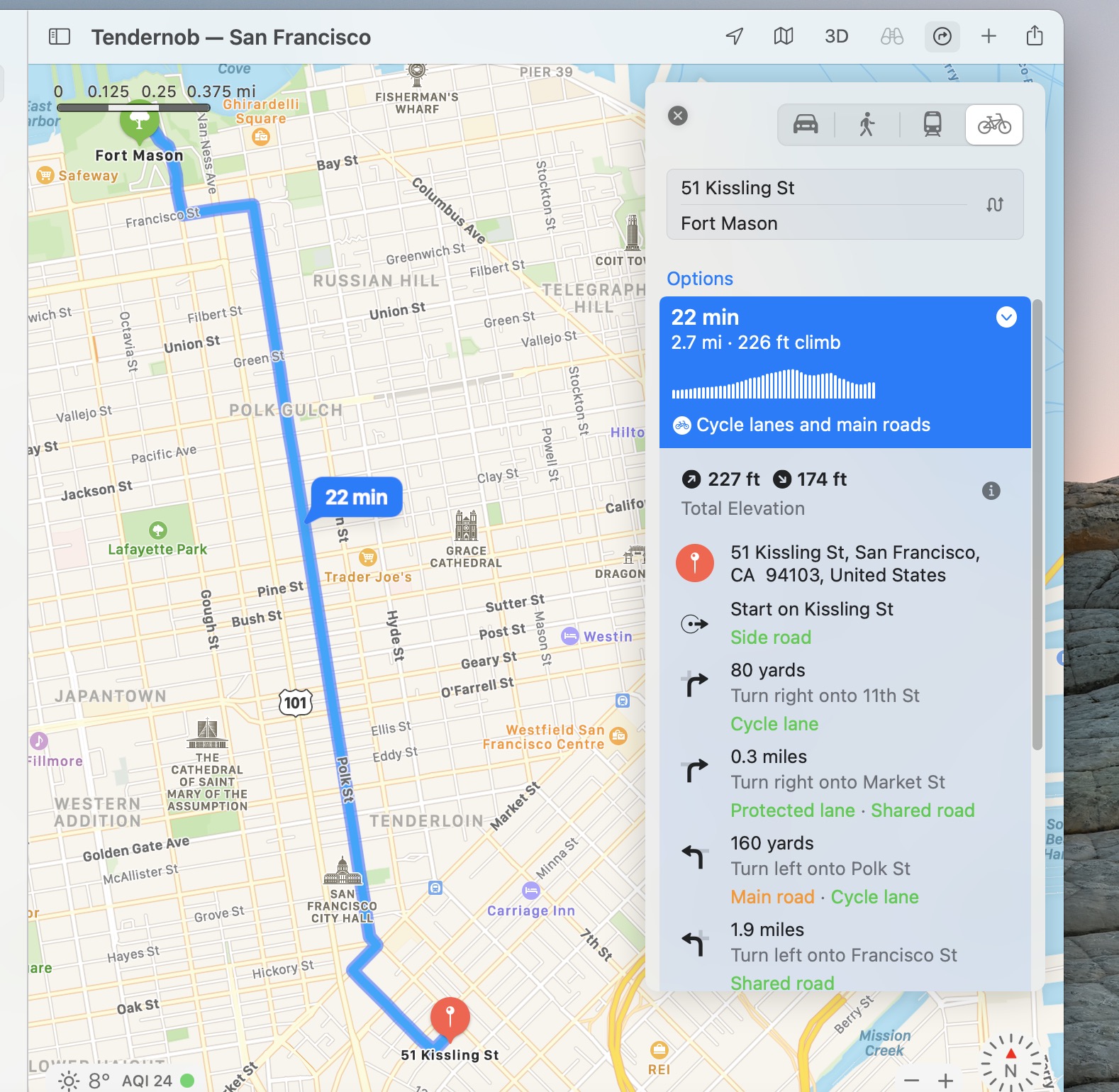
11. Keyboard Shortcuts in Reminders
Reminders has some new keyboard shortcuts that make it easier to navigate between lists and make changes like setting due dates.

12. Redesigned Wi-Fi Status Icon
The Wi-Fi connection status icon has been redesigned to include three segments like in iOS, rather than the traditional four.
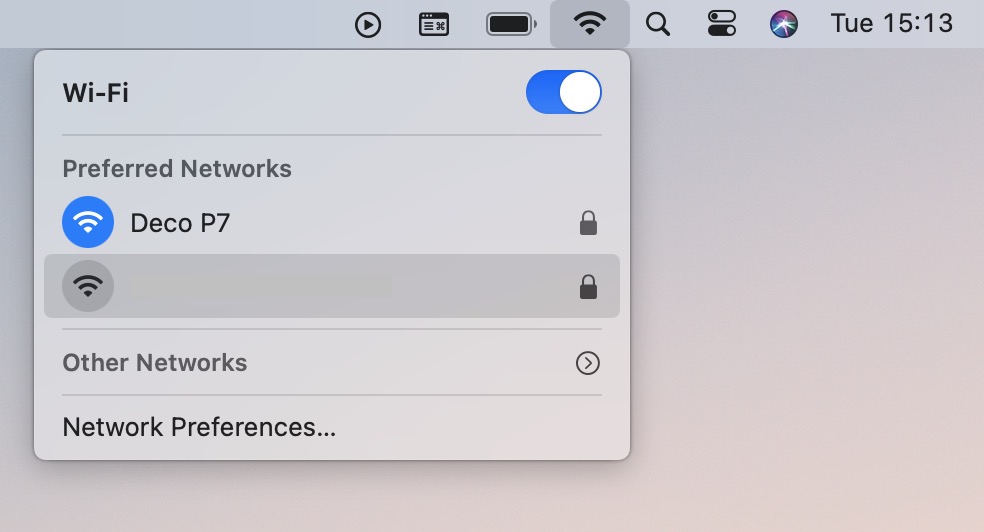
This isn’t exactly a new trick or feature, but we thought it was a worthwhile tip so users don’t have the impression that their Wi-Fi connection signal isn’t as strong as it used to be.
13. Guides in Apple Maps
You can now use Guides in Apple Maps to explore places. Guides provide recommendations for the best places to visit in a city, offering up suggestions on places to eat, shop, and explore.
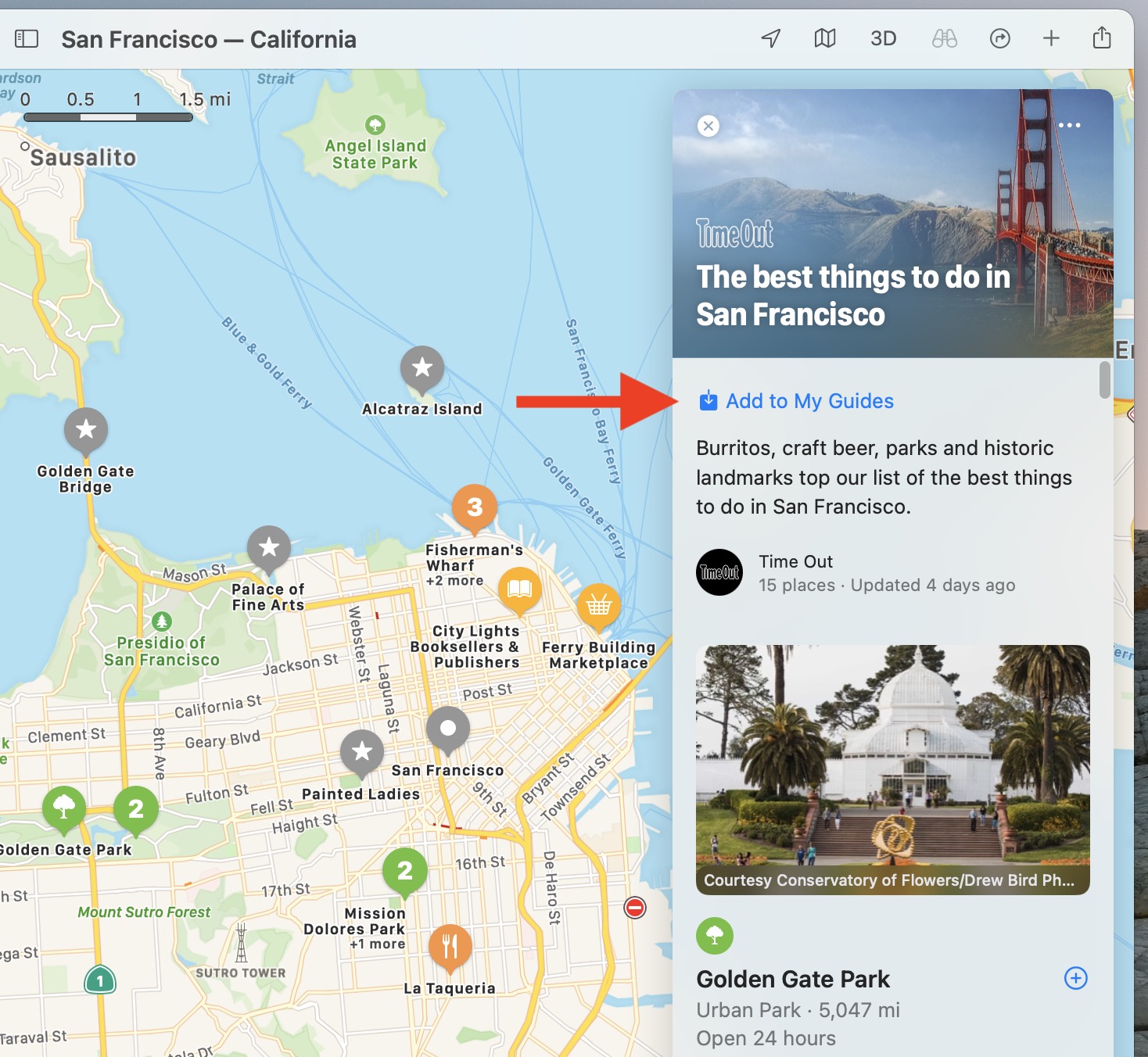
Some of Apple’s partners for these Guides include Lonely Planet, the Washington Post, AllTrails, The Infatuation, and more. You can save Guides with the Add to My Guides button, and they automatically update when new places are added, so you always have the latest recommendations.
14. Relocated New Tab Button in Safari
In Safari, the button to create a new tab has been relocated from the right of the tab bar to the main toolbar above.
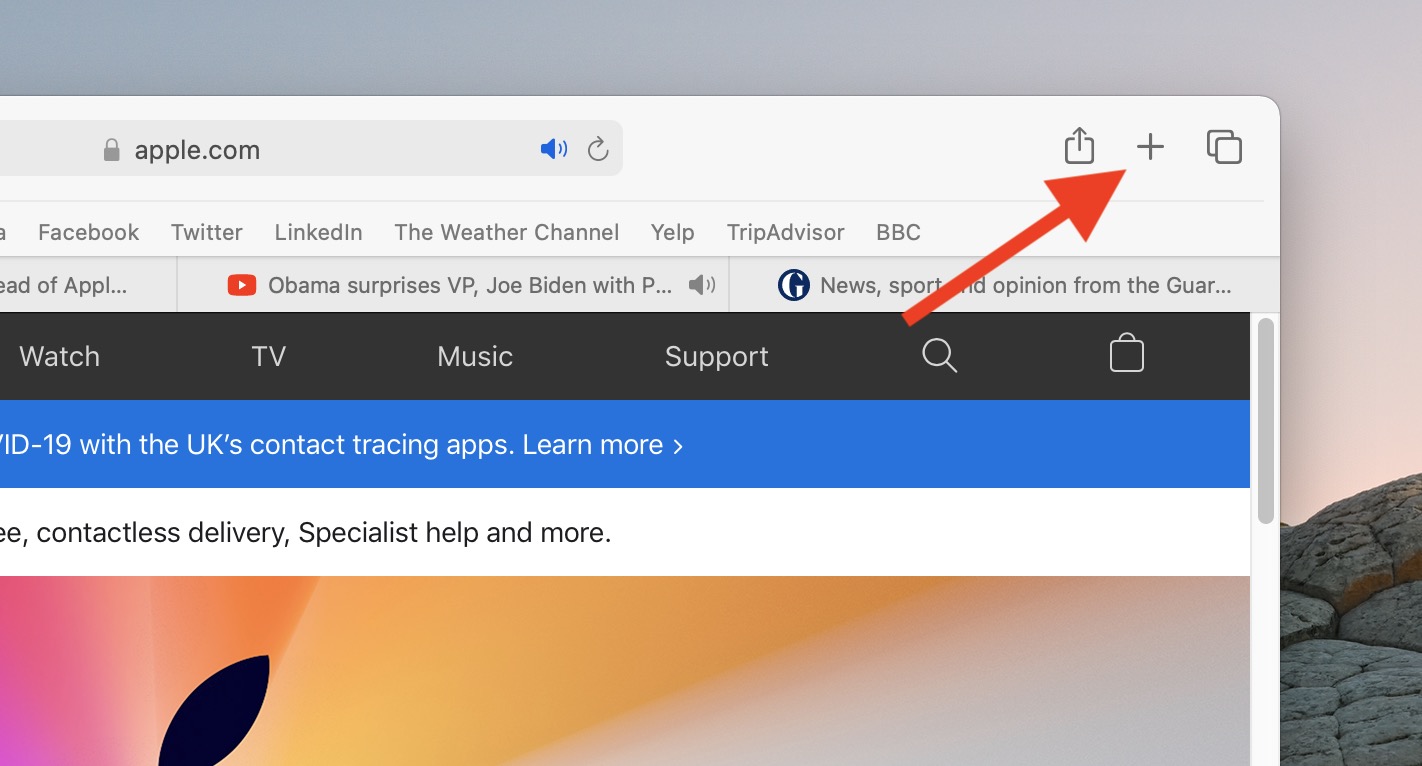
This allows you to move it where you like using the Customize Toolbar… option (right-click the toolbar), just like you can rearrange the rest of the toolbar buttons.
15. Pin Messages in the Messages App
Just like in iOS 14, you can now pin messages in the Messages app in macOS 11 to make it easier to refer back to conversations with people that you’re regularly in contact with.
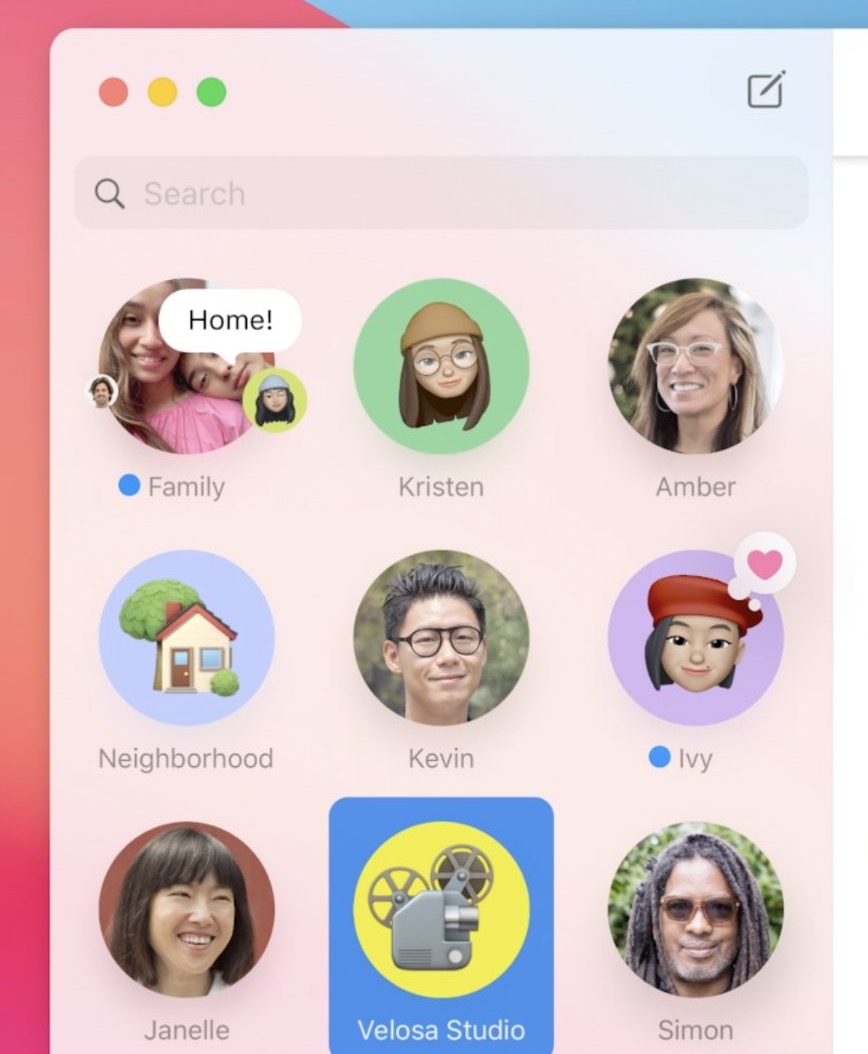
Up to nine of your most important conversations can be pinned to the top of the Messages app, with pinned conversations depicted as circular icons. Simply drag a chat thread to the top of the sidebar, or swipe right on the thread and click the yellow Pin button.
16. Enhance Voice Memo Recordings
The new Enhance Recording option in the Voice Memos app attempts to improve the quality of your recording. It does this by using machine learning to remove potentially unwanted sounds such as background noise and echoes. Think of it as the audio equivalent of the Photos app’s magic wand button that enhances the quality of the selected image.
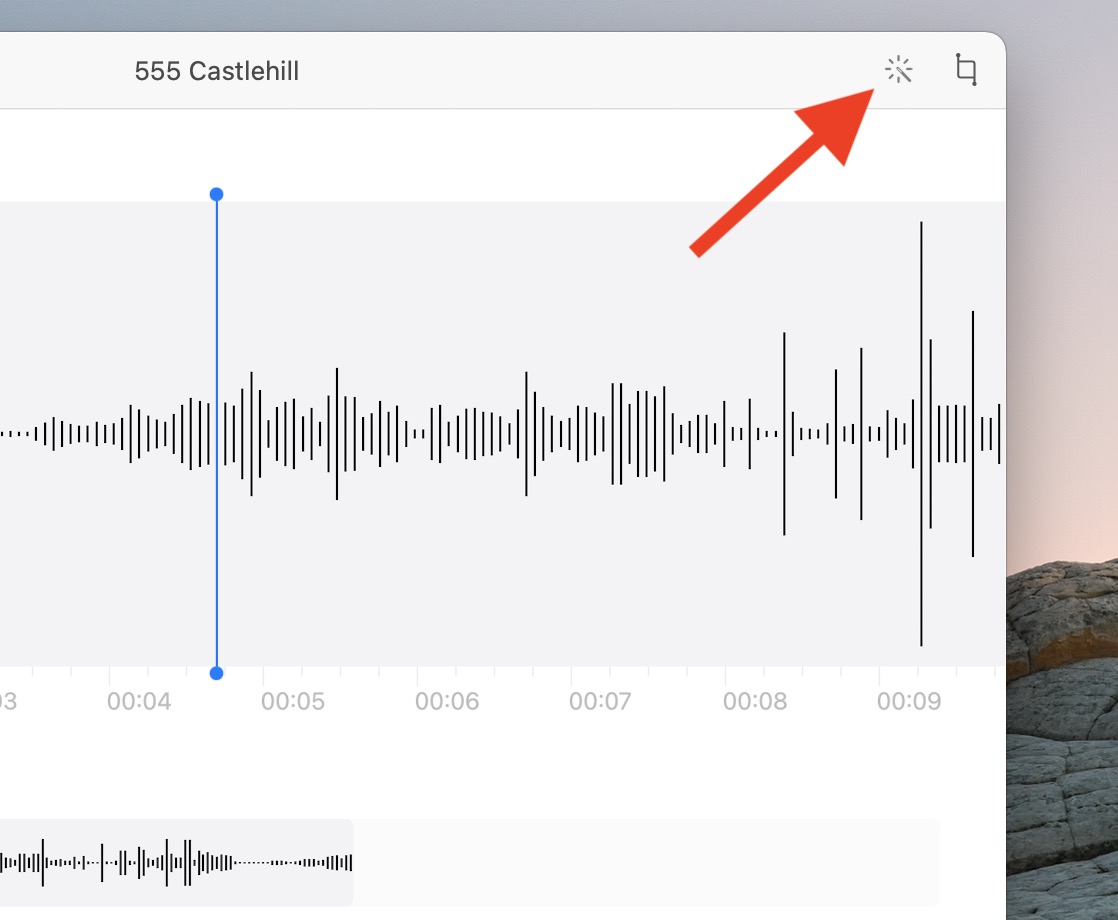
Just click the Enhance button in the top-right of the window when you’re editing a recording’s waveform. The result won’t always be all that dramatic and may not even be particularly desirable for what you’re recording, but it’s worth a try and you can easily remove the enhancement if you don’t like it.
17. Safari Built-In Translation
Safari now has a built-in web translator that translates seven languages with just a click, so you can read an entire webpage in another language without having to have an extension installed.
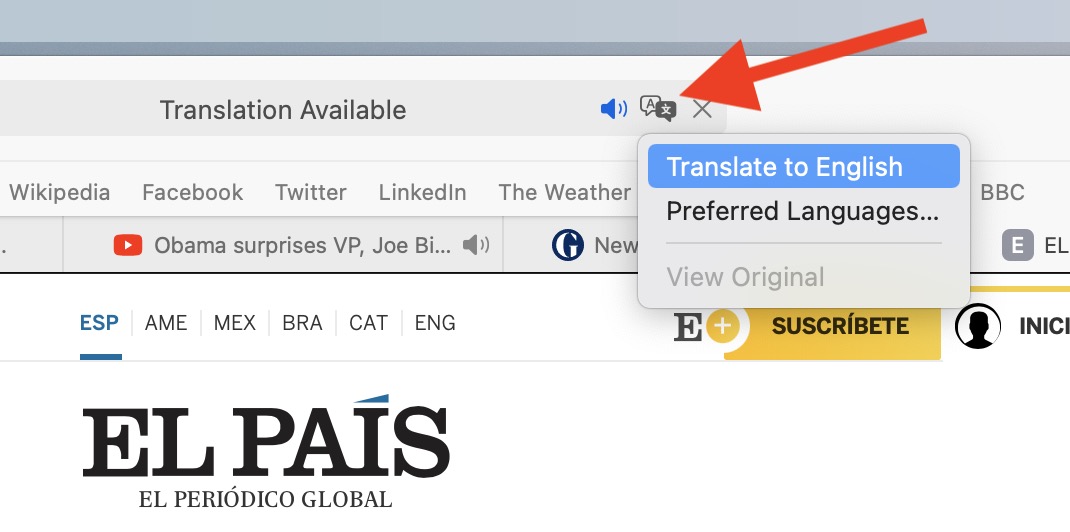
When you load up a page in a language you don’t understand, check for the translation icon at the right end of the address bar. Built-in translation works for English, Spanish, Chinese, French, German, Russian, and Brazilian Portuguese.
18. Prefer Tabs When Opening Documents
This option lets you force a new document to open in a tab instead of a new window. It isn’t exactly new, but it has moved, so it’s worth highlighting.

“Prefer tabs when opening documents” has been relocated in System Preferences from the Dock pane to the General pane. It’s also now simply called Prefer tabs and the options have been rephrased to Never, In full screen, and Always.
19. Battery Usage History
In the new Battery section that replaces “Energy Saver” in System Preferences, a new Usage History feature provides details on your Mac’s battery life over the course of the last 24 hours or the last 10 days, broken down into Battery Level and Screen On Usage so you can see how your battery is performing.
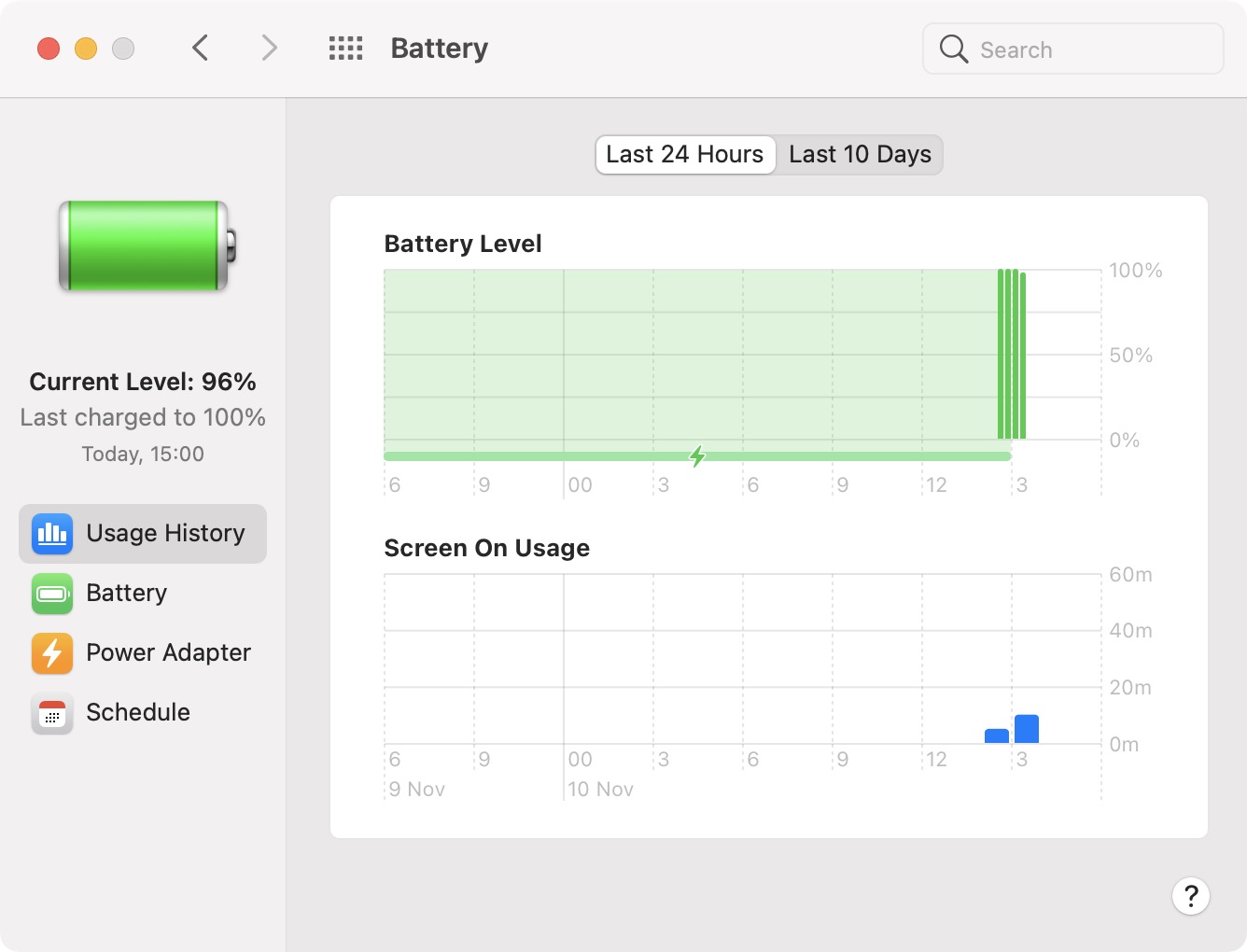
Along with the Usage History section, there are Battery and Power Adapter sections that replace the functionality that was previously available through Energy Saver. You can choose when to turn the display off, enable or disable power nap, and more, with the settings split for battery usage and usage when connected to power. The Schedule feature is also present.
20. Assign Reminders to People
In the Reminders app, you can now assign reminders to specific people in group reminder lists.
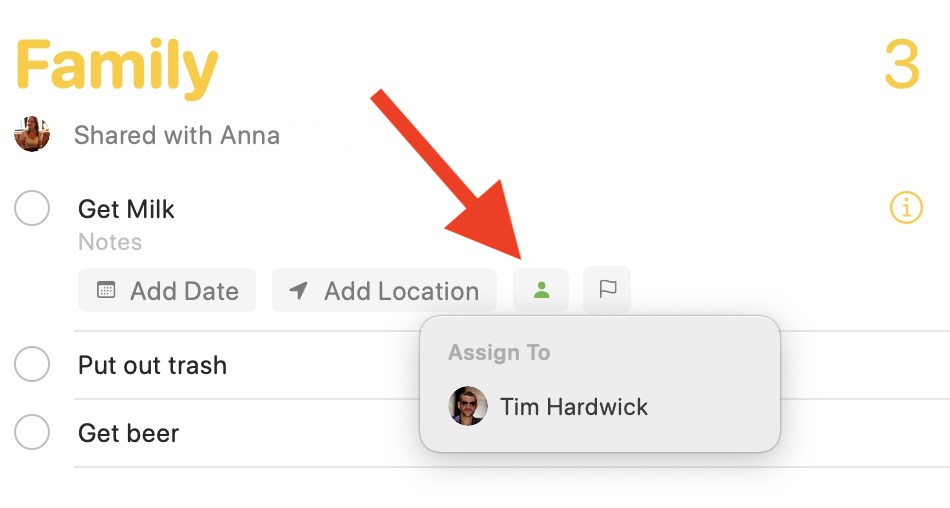
Click a reminder and then click the Assign To button, or right-click the reminder and select the same option from the contextual dropdown menu.
21. Speak Typing Feedback
In System Preferences, the “Speech” section in the Accessibility pane has been renamed Spoken Content, and it includes a new feature called Speak typing feedback which, when enabled, will speak back to you what you’re typing, as you type it.
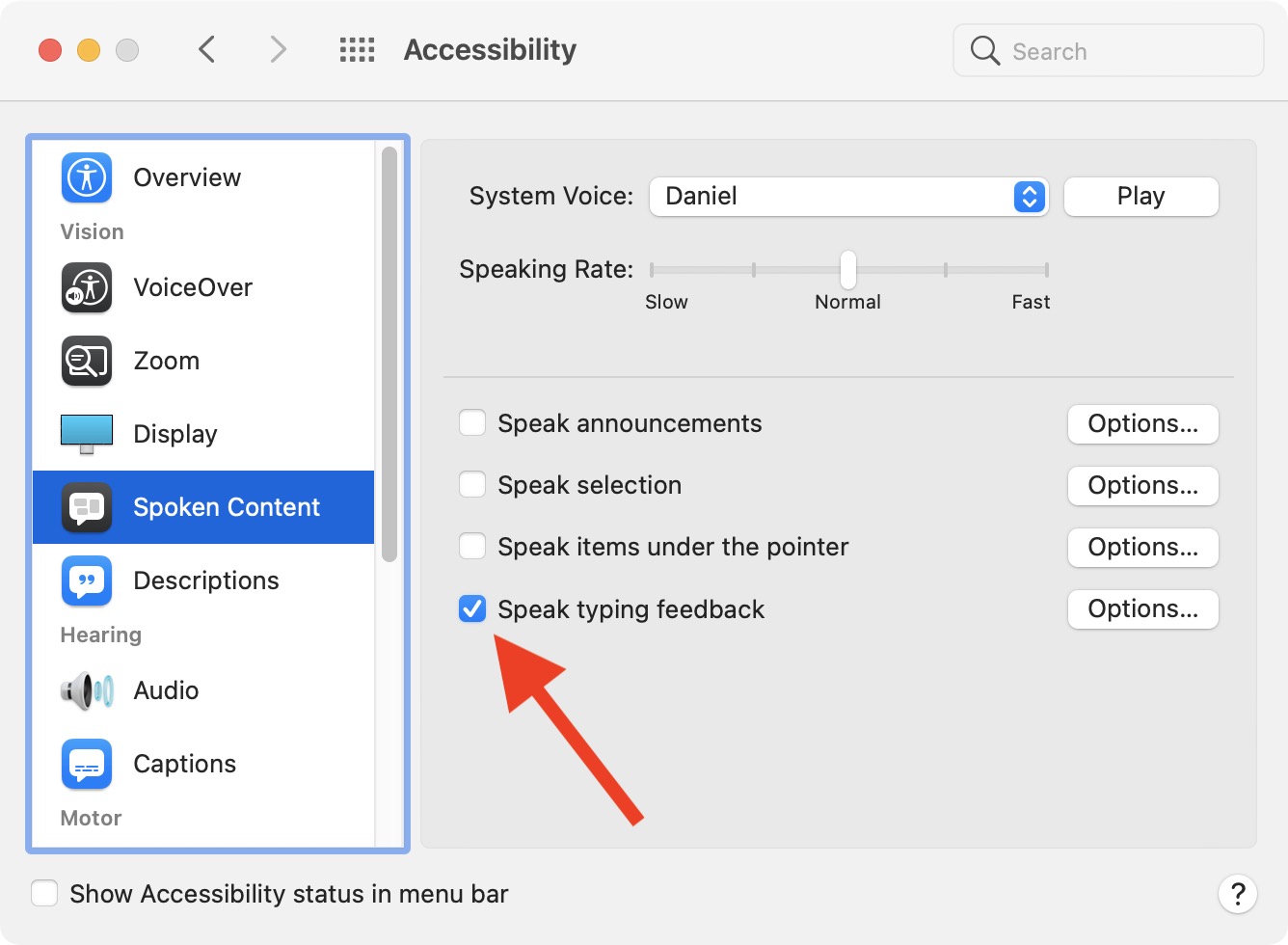
22. Hide Menu Bar
In macOS 11, Apple has moved the setting that lets you hide the menu bar. Previously this could be found in the “General” pane of System Preferences. I
[…]
Read the original article: macOS Big Sur: Quick Start Video Plus 50 Tips and Tricks